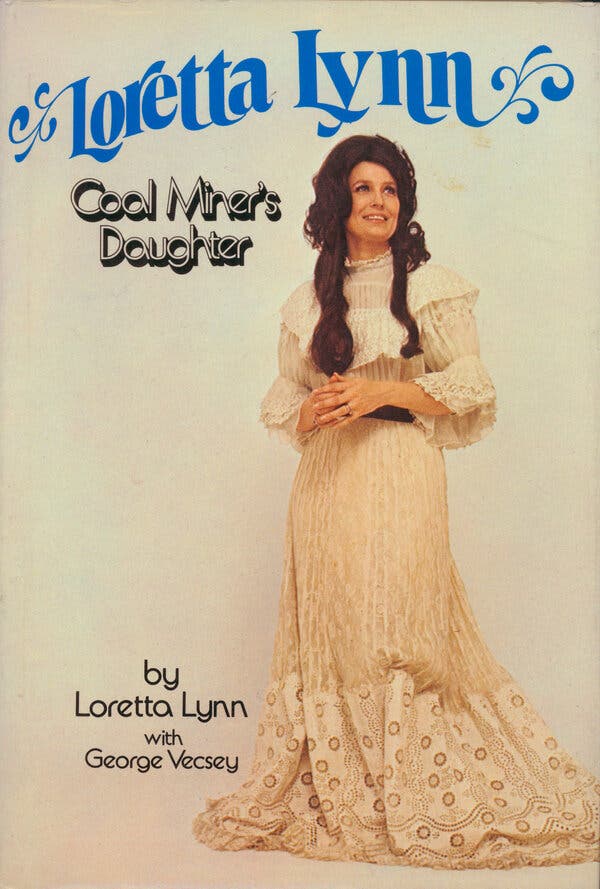The regular season has ended, and the playoffs begin today. There are 12 playoff teams, and my sentimental favorite is Seattle. It is the only franchise that has never been to a World Series. Next in line would be San Diego and Tampa Bay who have been to the Series but have not won. But the odds are not good for any of them. For an entertaining preview of the first round games, check out Joe Posnanski here.

The biggest individual stories from the regular season were Albert Pujols reaching a career milestone of 700 homers (covered in Hot Stove #202) and Aaron Judge joining…
The 60-Homer Club: Before 2022, individual MLB players had hit 60 or more home runs in a season eight times.
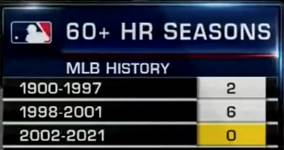
The first two were by Babe Ruth (1927) and Roger Maris (1961). The next six came within a narrow 4-year timeline (a/k/a the height of the steroid era), and the sluggers were Sammy Sosa (3 times), Mark McGwire (2 times) and Barry Bonds.
This year, Aaron Judge joined the 60-Homer Club with 62 homers.
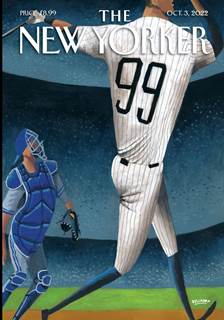
Sosa, McGwire and Bonds all played for National League teams. Bonds holds the MLB and NL season records with 73 homers in 2001.
Ruth, Maris and Judge are American Leaguers, and coincidentally all three played right field for the New York Yankees. Ruth hit 60, Maris hit 61 and Judge hit 62, so Judge now holds the AL record. Click here for a cool progressive timeline of the AL season home run leaders from 1901 to 2022.
Judge won his AL home run crown by a wide margin (62 over Mike Trout’s 40). In contrast, Ruth and Maris had solid competition into the last month of their 60-homer seasons. For Ruth, it was Lou Gehrig. For Maris, it was Mickey Mantle.
Babe Ruth and Lou Gehrig in 1927: In 1921, Babe Ruth hit 59 home runs. An astounding number at the time. Over the next five seasons, he did not hit more than 47 in any year. In 1927, he announced that he wanted to hit 60 homers. His surprising competition turned out to be his teammate Lou Gehrig who had hit only 16 the previous year.
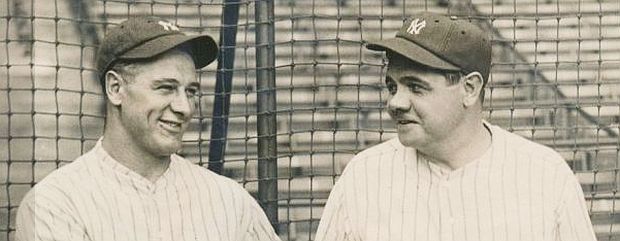
Ruth and Gehrig traded leads in the home run race and were rarely more than two apart going into early September. On September 5, they were tied with 44 homers each. Gehrig then went into a homer drought while Babe surged and reached his goal of 60 homers. Gehrig finished with 47. Below, the season as charted by the Radical Baseball blog:
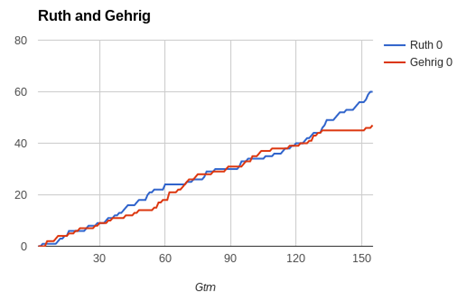
Although Ruth won the home run title, Gehrig had more RBIs (173 to Ruth’s 165) and hit for a higher average (.373 to Ruth’s .356). In terms of stats used today, Ruth edged out Gehrig in OPS+ (225 to 220) and WAR (12.6 to 11.9). They were both spectacular (Seinfeld reference).
Ruth and Gehrig in Kansas City in 1927: After their monumental 1927 season, Ruth and Gehrig formed teams to play each other in a barnstorming tour across the country (Bustin’ Babes v. Larrupin’ Lous).
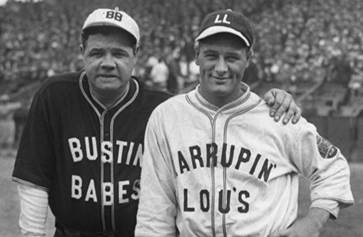
Their Kansas City tour stop on October 15 was a benefit for Children’s Mercy Hospital. Below, Lou and Babe present a refrigerator to the hospital.
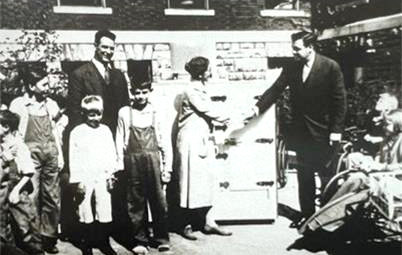
Mantle and Maris in Kansas City – 1951/1958: In 1951, Mickey Mantle began his first season with the Yankees. He got off to a poor start and was sent down to the Kansas City Blues, the Yankees AAA affiliate. He played in 40 games in KC before being called back up, long enough to be in the Blues team photo (below with Bob Cerv).

Roger Maris signed with Cleveland in 1953 and made it to the majors in 1957. In mid-season 1958, he was traded by the Indians to the Kansas City A’s.
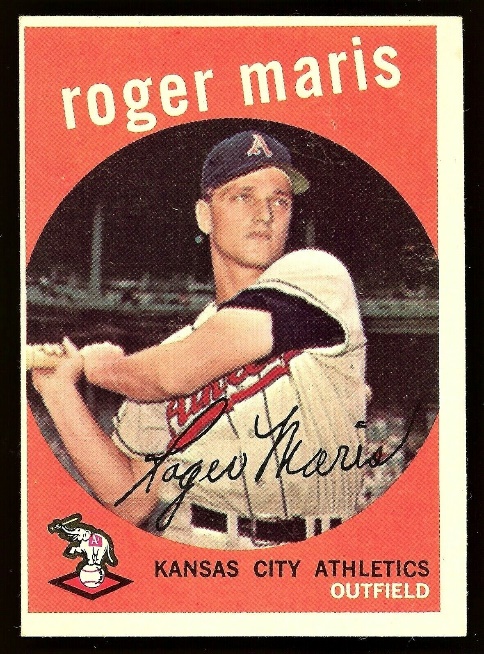
Maris had a good season for the A’s in 1959, but was traded to the Yankees in the offseason. The A’s had a reputation for trading away good players to the Yankees, and Maris quickly upheld that notion. In his first season with the Yankees (1960), he was named MVP of the American League, edging out teammate Mickey Mantle in the balloting (225-222). This set the stage for their legendary “M&M Boys” battle in 1961.
Maris and Mantle in 1961: There was little to indicate that Maris and Mantle would be challenging Babe Ruth in 1961. Mantle had hit 52 homers in 1956, but no more than 42 since. In 1960, Maris hit 39, his career high.
Mantle got off to a good start in April. Maris had more homers in May and June to take the lead 27-25. By mid-July, it was Maris at 35 and Mantle at 33, and there was buzz that both players might get to the magical 60 – Babe Ruth’s record from 1927.
On July 17, Commissioner Ford Frick ruled that the M&M Boys would need to reach or surpass 60 in the first 154 games to tie or take the record from Ruth. Because of expansion, the season now had 162 games. Frick said some special mark or notation would need to be used if they needed more than 154 games (the “asterisk” controversy).
Mantle and Maris kept up the pace. From the NY Times, August 11:
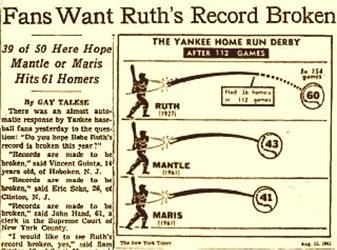
On September 4, they posed at Yankee Stadium with former President Harry Truman. As of that date, Maris was at 53 and Mantle at 50.

Mantle faded in mid-September, but Maris did not, hitting #59 on September 20 in the 154th game. Under the ruling by Commissioner Frick, any later homers would not tie or erase Ruth’s record. Hence, this headline:
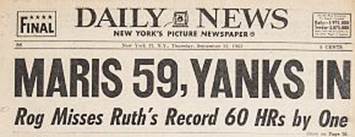
There were eight games to go. Mantle hit #54 on September 23, but then missed the balance of the season with an injury. Maris got #60 on September 26 and then #61 on October 1, the last day of the 162-game season (video here).
The season-long race as charted by Radical Baseball:
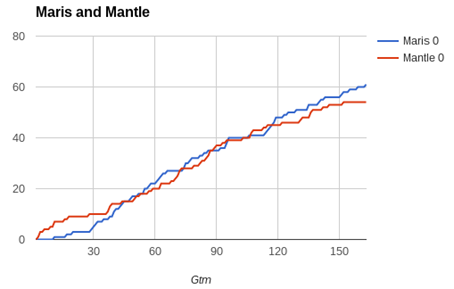
Although Mantle did not win the home run title, his season was otherwise dominant. Using today’s advanced stats, Mantle led the AL in WAR at 10.4, while Maris was tied for fifth at 6.9. But Maris had beaten the Babe (if you ignore Frick’s logic), and that was enough to give him the MVP nod over Mantle in another close vote (202-198).
Here Comes the Judge, Here Comes the Judge: In 2017, Aaron Judge was a rookie sensation for the Yankees. He hit 52 homers to lead the American League and was named AL Rookie of the Year.
Over in the National League that year, Giancarlo Stanton of the Miami Marlins hit 59 homers. In the offseason, Miami traded him to the Yankees. It looked like the Yankees had two players with a good chance to join the 60-Home Run Club. Maybe even treat us with a season-long thriller like Ruth and Gehrig in 1927 or Maris and Mantle in 1961. Sports Illustrated cover: LET THE BASHING BEGIN.

The Judge/Stanton home run derby did not materialize. From 2018 to 2021, neither player reached 40 home runs in a season.
This year, Stanton hit 31. But oh my goodness, Aaron Judge was transcendent. I like this description by David Von Drehle in a recent Washington Post column:
“Aaron Judge is a baseball player as Michelangelo might have conceived of one. He looms over 6.5 feet tall and packs his New York Yankees pinstripes with 282 pounds of lean muscle. He could be a Roman monument but for the cobra quickness with which he whips his bat through the strike zone. When Judge hits the ball squarely, as he is doing frequently this season, a home run seems the mildest of possibilities. Orbit does not feel out of the question.”
After getting 6 home runs in April, Judge jumped up his pace and soon there was buzz of him getting to 60 or more. In May, 12 homers. June – 11. July – 13. August – 9. September – 10. The last two in September were milestones – #60 and #61.
September 20 – #60 to tie Ruth: In front of a home crowd at Yankee Stadium, Judge hit #60. Video here.
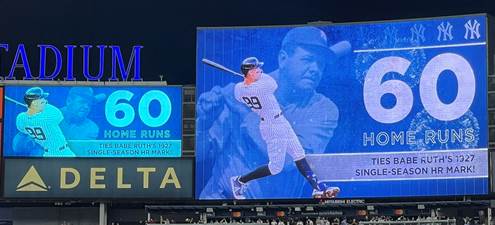
The next five games were at Yankee Stadium and drew 200,000 fans. They stood, cheered and held up their smartphone cameras during every pitch. Sports networks cut into regular coverage for Judge at bats. Alas, no home runs for Judge in the five games. From the New Yorker:
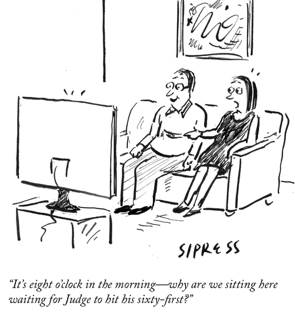
September 28 – #61 to tie Maris: The Yankees headed to Toronto for a 3-game series, and Judge got a lot of walks, but no home runs in the first two games. Finally, in the third game, Judge hit #61. Video here.

The team returned to Yankee Stadium for a 3-game series with the Orioles. No homers by Judge. The Yankees headed to Texas to finish the season with a 4-game series against the Rangers. No homers for the first two games. Then in the third game…
October 3 – #62, Judgement Day: Judge came to the plate to lead off the first. I called Rita in to our TV room to watch. And he did it – we stood and cheered. #99 had passed #9. Video here.
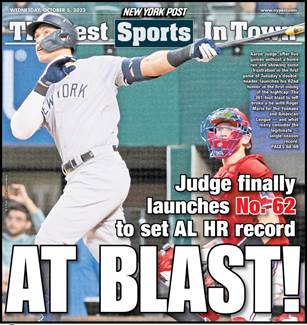
The Yankees won the game and brought their season record to 99-62. And we had just seen #99 hit #62. Baseball.
Asterisks and the Record Book: Commissioner Ford Frick placed a cloud over Maris for not getting his 60th and 61st home runs in the first 154 games of the 162 game season. Frick did not use the term “asterisk” – he said “special mark or notation,” but asterisk became the shorthand term. And then a funny thing intervened. The asterisk notation never happened. None of the popular record books made any distinction (nor did they for doubles, triples, pitching wins, etc. in a longer season). And if you look online today, you will not find two sets of records in Baseball Reference, Baseball Almanac, Wikipedia, etc.
But the asterisk story survives in baseball circles. Last week, Roger Maris Jr. tweeted that Frick had “established” separate records for 154 and 162-game seasons. But Frick’s ruling faded and the distinction was rarely noted while Aaron Judge made his run at the record.

There have been suggestions that steroid-sluggers should have an asterisk for their records, and that is the point Maris Jr. was making in his tweet – separate records for PED home runs and non-PED home runs. Then his dad and Aaron Judge would be the top two non-PED home run champs (for a 162-game season). Not going to happen.
In any event, PED or otherwise, Aaron Judge has a home run stat that elevates him above Barry Bonds, Mark McGwire and Sammy Sosa. None of them dominated a home run race like Judge. When McGwire hit 70 in 1998, Sosa hit 66. When McGwire hit 65 in 1999, Sosa hit 63. When Bonds hit 73 in 2001, Sosa hit 64.
In 2022, Judge had 22 more homers than the AL runner-up Mike Trout (40). Only one other player has been that dominant in season home runs – Babe Ruth in the 1920s. Even if you add in the NL leader for this year (Kyle Schwarber with 46), the margin is still significant.
And it’s not just the home runs. Judge almost won the AL Triple Crown, finishing first in homers and RBIs and second in batting average. In the AL, his first place numbers were often dramatically higher than second place: OPS+ (211 to 187); total bases (391 to 309); runs (133 to 103); walks (111 to 87); offensive WAR (10.4 to 6.8), etc. He even stole 16 bases. Judge will be MVP, though in any other year, it would be the amazing Shohei Ohtani (WAR of 9.6 when including his pitching stats).
Aaron Judge just had one of the best seasons in baseball history. Savor that.
Case closed.
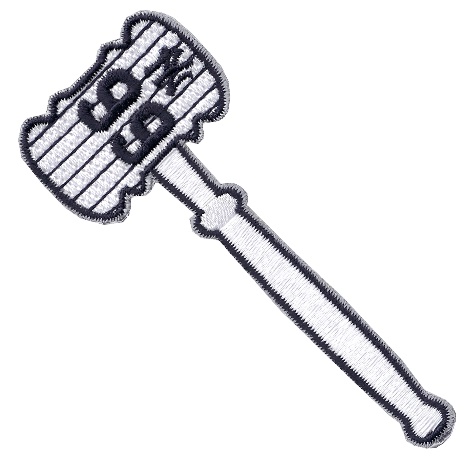
Roger Maris at the Nelson: In 1962, the year after Maris broke Ruth’s record, Andy Warhol incorporated a news photograph of Maris in Warhol’s first photo-silkscreened painting (Baseball). In 1963, the piece was purchased by the Guild of the Friends of Art and other friends of the Nelson-Atkins Museum of Art and gifted to the museum (click here for the gallery link). You can check out Warhol’s Baseball in the Contemporary Galleries at the Nelson. Rita and I did that yesterday.
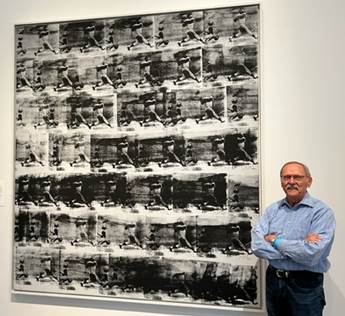
Lonnie’s Jukebox (1) – Roger Maris and the Cleftones in Queens: In 1961, Roger Maris hit 61 homers, and 61 years later in 2022, Aaron Judge hit 61 plus 1 for a new AL record of 62.
So some 1961 rock ‘n’ roll is in order. My initial 1961 selection is “Heart and Soul” by the Cleftones, but I’ll introduce the group by playing the first song I heard by them.
“Little Girl of Mine” by the Cleftones (1956). The group was formed in 1955 when the members were students at Jamaica High School in the Borough of Queens. Hot Stove friend George Vecsey attended Jamaica with the Cleftones and says the group “sang under-the-streetlights doo-wop for decades.” George was in chorus with members of the group and fondly remembers them harmonizing on the Coasters’ “Charlie Brown” with bass singer Warren Corbin’s deep voice asking “Why’s everybody always pickin’ on me?”.
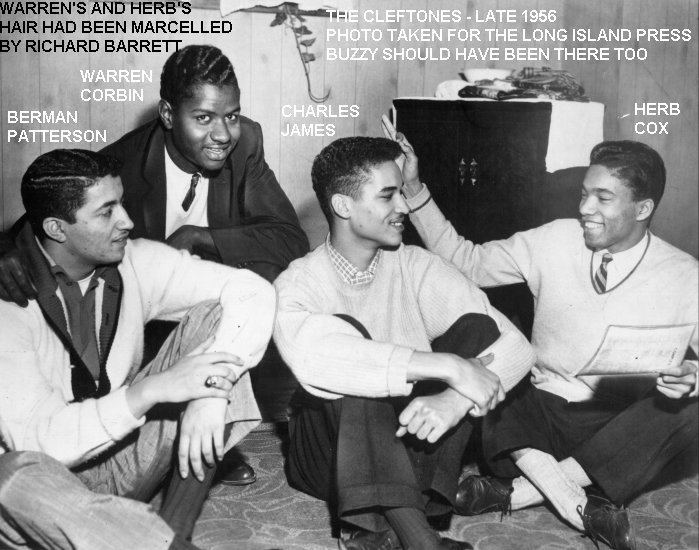
“Heart and Soul” by the Cleftones (1961). This was the Cleftones’ biggest hit, peaking at #18. The record got new life in 1973 as part of the soundtrack in American Graffiti.
While the Cleftones from Queens were moving up the charts in the summer of 1961, the M&M Boys were chasing Babe Ruth while living in an apartment in Queens. The previous year, Maris had rented an apartment in Queens for $251/month. His roommate was Bob Cerv who had been a teammate of Maris with the Kansas City A’s before both were traded to the Yankees. The two kept the apartment for the 1961 season and picked up a third roommate – Mickey Mantle. Mickey had been staying at the St. Moritz Hotel and getting into trouble. It was suggested he get away from Manhattan and join Maris and Cerv in Queens. Some rules were laid down (no women), and mostly followed. Mickey left on Labor Day, saying he had had enough of this life, and went back to Times Square.
Roommate Trivia: Bob Cerv had only 131 plate appearances in 1961. But he is part of a unique record in the Hot Stove record book: Most homers by roommates in a season – 121. Maris (61), Mantle (54) and Cerv (6).
Sportswriter Trivia: One of the sportswriters covering the M&M Boys that summer was George Vecsey, then working for his first paper, Newsday. In 1968, George left Newsday and began his storied career with the New York Times.
Now, to return to our original programming, some other hits from 1961…
“Will You Love Me Tomorrow” by the Shirelles. Written by the husband and wife team of Gerry Goffin and Carole King.
“Hit the Road Jack” by Ray Charles. I was in college in 1961, and Ray Charles was the most-played artist at the fraternity house.
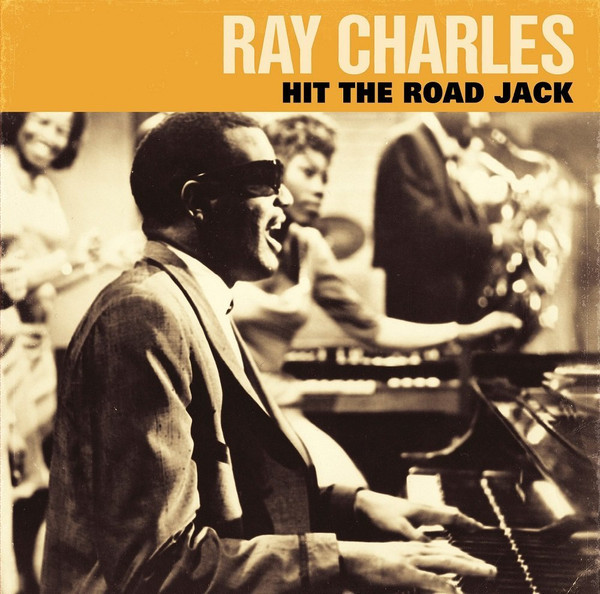
“Tossin’ and Turnin’” by Bobbie Lewis. This song was #1 for seven weeks during the summer of 1961. Probably describes the sleeping habits of Roger Maris in Queens as the pressure mounted in the home run race. Also on the soundtrack of American Graffiti.
“Stand By Me” by Ben E. King. Co-written by King and the legendary songwriting duo of Jerry Leiber and Mike Stoller.
Lonnie’s Jukebox (2) – Loretta Lynn: Loretta Lynn died this past Tuesday at the age of 90. Her story is known to many from the 1980 movie Coal Miner’s Daughter. The movie was based on the 1976 book of the same title, co-authored by Loretta Lynn and George Vecsey (yes, the same George). Below, George and Loretta. Click here for George’s warm tribute to Loretta in Wednesday’s New York Times.

“Coal Miner’s Daughter” by Loretta Lynn (1970). RIP.
